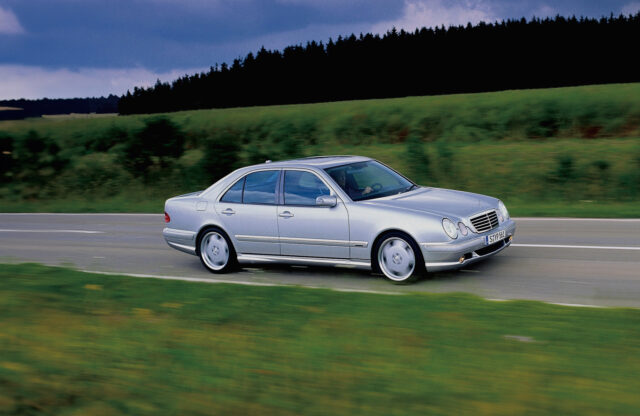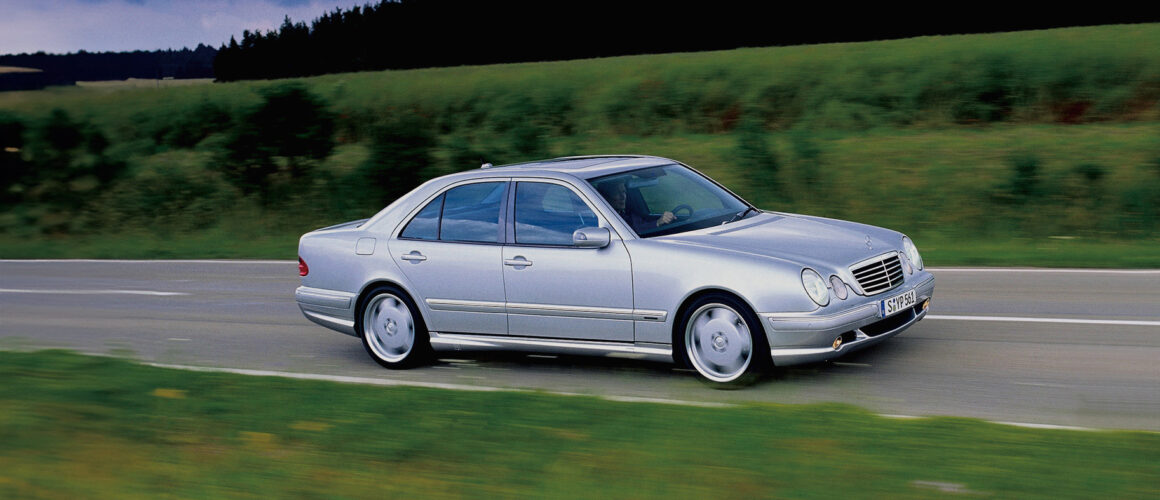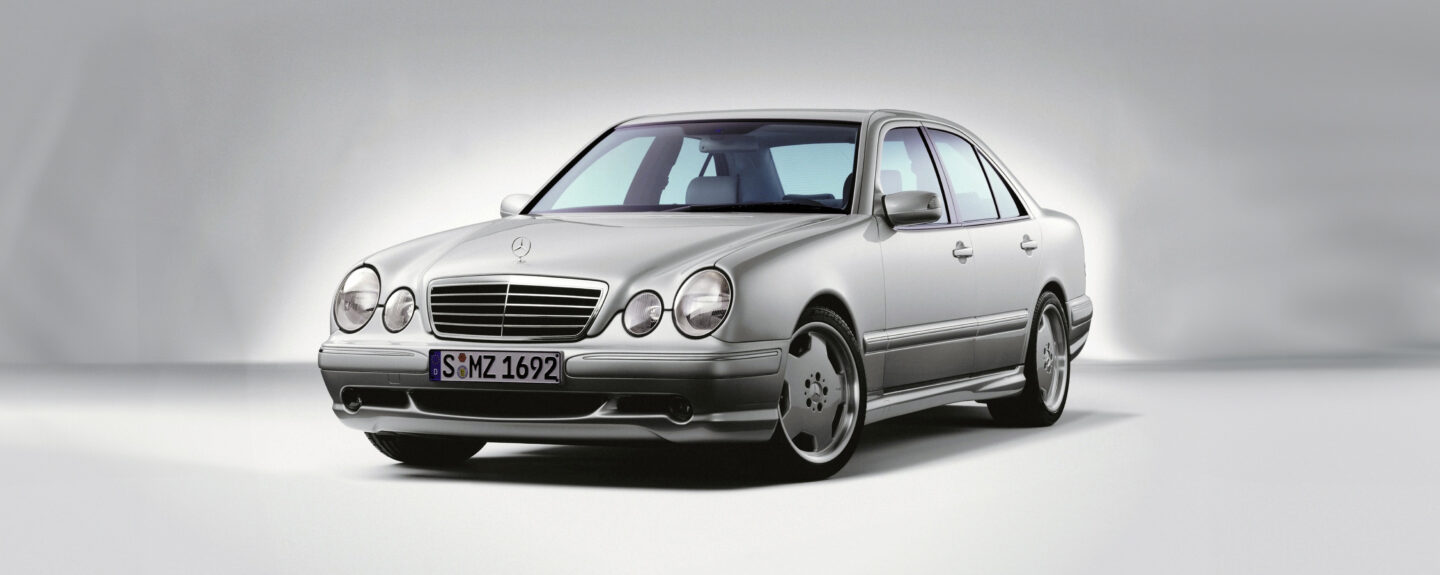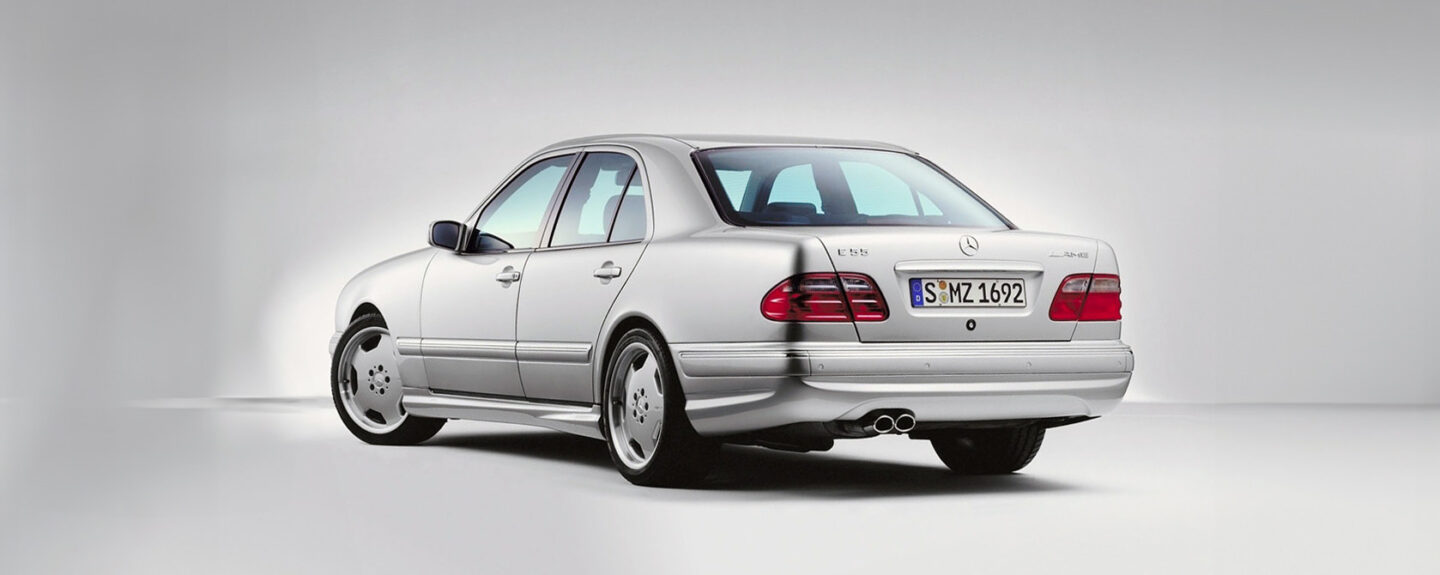Some cars reach legendary status early on in their life, such as BMW’s E39-generation M5. A great engine, sublime chassis and good looks – plus the indefinable M-factor – helped to elevate this BMW beyond the realm of mere hot saloon. Just a few months before the M5 was launched, however, Autocar magazine actually declared this, the W210-generation Mercedes-Benz E55 AMG, to be the world’s best sporting saloon. It was an impressive package and far more of an all-rounder than the hot rod reputation of AMG might have you believe. Arguably it set the template for a generation of big V8-engined AMGs, yet today it seems largely forgotten and unloved. It shouldn’t be.
History
As the relationship between Mercedes and the Affalterbach-based tuning company moved closer, AMG’s products became better developed and more mainstream. Models such as the six-cylinder C36 were sold through Mercedes dealerships with full warranties in the early 1990s and, although by the time this V8-engined E55 was launched AMG was still independent, it was working closely with Mercedes on its product development.
The E55 was an evolution of the special-order (left-hand-drive only) E50 AMG, on sale briefly between 1996 and 1997. AMG’s hand-finished engine was based on the sohc 5.0-litre M113, enlarged to 5.4 litres and fitted with a pair of hotter camshafts, a new intake and a freer-flowing exhaust. This boosted output to 349bhp and 391lb ft of torque, the latter delivered at a gut-punching 3000rpm and sent to the rear wheels via Mercedes’ five-speed, electronically controlled automatic gearbox. With double wishbones up front and a multi-link system at the rear – now with switchable dampers – the chassis was more than capable of harnessing the power. A serious brake upgrade beneath a set of magnificent 18-inch alloy wheels completed the package.
In many ways, the E55 cemented the formula for the modern-day fast Mercedes. Not just a big saloon with a thumping V8 up front, but a well-rounded performance car with some real dynamic ability. Mercedes offered the E55 as an estate, too. Tick the right option box and you could even have seven seats.
Aside from a minor facelift in 2000, not much changed throughout production before the W210 series was replaced by the W211 in 2003. Time certainly wasn’t kind to this generation of E-class, though; most W210s were great to drive but their shoddy build quality caused some serious problems as the cars aged. Unlike with most cars of their era, unsightly rust was a huge issue – and it really put a downer on the Mercedes for many owners.
Chances are, though, that if an E55 has made it this far it’s likely to be a good one. Treat it as a classic car when it comes to maintenance and rust prevention, and this could be a great buy. Yes, it still lives in the shadow of the M5, but that’s why the E55 is potentially a clever purchase. It was always a very different proposition, and even the best examples cost significantly less money today.
Common problems
Corrosion is by far the biggest problem for this generation of E-class, and the AMG version is no exception. Unsightly cosmetic rust around the boot lock, on all doors, the rear quarter panels and the front wings will be obvious, but the real nastiness will be hiding underneath. Sills, subframes, inner wheelarches, front spring cups and the whole underside should be checked very carefully.
The engine and drivetrain are very reliable, but proper upkeep is vital. The gearbox is officially ‘sealed for life’ but in practice regular fluid changes are crucial.
What to pay?
Values have risen, but you can still expect to find a tidy saloon with 100,000 miles for £5500-7500. The occasional low-mileage example or fresh Japanese import might push the £15,000 mark. ‘S210’ estates are rarer, and carry a £1000-1500 premium. Feeling brave? Big-mileage cars, and those with corrosion issues, can still be picked up from around £2500…






